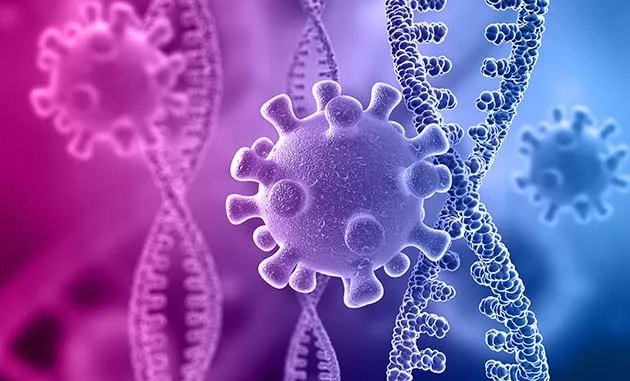“Always wear face masks”,
“Maintain social distancing”,
“Keep Sanitizing your hands regularly”
“Avoid crowded places”
“Get tested. Get Quarantined”
These are some of the phrases that are incredibly common to hear these days. Not long ago these phrases were aspects of the new normal world in which humanity was stepping into. However, it’s been more than two years and still, the concerns more or less remain the same. With evident lifestyle changes of the massive population, the inadvertent rise of online and digital media, from education, grocery, business, and even offices, and the subtle changes and adaptations among the human genome and behavior, which may show themselves in the coming few decades and generations constituted to the definition of ‘New Normal ‘ in the world.
☛ Read Latest: Coronavirus COVID19: An Important Message for Students & Parents from Air Marshal (Dr.) Pawan Kapoor
Let’s have a look at how this ‘New Normal’ in recent days has been redefined as ‘Normal’ for many.
The Days Of Beginning
The novel coronavirus, scientifically called SARS-COV-2, which was first reported in Wuhan, China, on 31st December 2019 has slowly groped the entire world in its fist. Though there is no scientific evidence proving the sudden appearance of such a retrovirus, in the first place, one can certainly not under the rule the power of nature and its virtue.
During the initial days, the virus created a sudden panic among a majority of nations. With enormous circulating rumors, personified symptoms, and no clear guidance even in the developed countries like America, various legislations across the world failed to understand and cope with the magnitude of the brutal force of the virus.
Medical research institutions across the world devotedly worked to understand the mechanism so they can guide the world with precautionary measures and enable the world with a more targeted approach in combatting the pandemic.
☛ Read Latest: Coronavirus Disease (COVID19): When To Get Tested For COVID-19? | Rus Education
The Rise and Decline in 2020
The graph demonstrating the covid cases all over the world saw various instances of sudden peaks and declines. In India, in order to control the spread of the virus, the government of India imposed a lockdown of 6 months. Though the restrictions were strict, there was no visible impact on controlling the spread.
As a consequence of this unprecedented emergency and no prior experience in dealing with the epidemic, the government strategies were tested again and again, with satisfactory outcomes. As a result, the country faced the intensifying issues of inflation, sudden unemployment, and public fear. It was even believed that during these months, the entire world stopped working. The major loss was faced by the daily wage workers, street hawkers, and students of all ages.
With the decline of the number of cases, India along with the world lifted up the lockdown and a majority of workplaces resumed their usual routines with the guidelines to use masks and sanitizers.
☛ Read Latest: PM Narendra Modi’s Address To The Nation (Highlights ) | Coronavirus COVID-19 | Rus Education
Year Two Phase Two
Phase 2 of the pandemic came with partial knowledge of everything. Though, this time most of the places in the world, including India were not prepared for the amplitude of contracting the virus as well as its serious implications. Therefore, even after imposing complete lockdown, in a developing country like that of India, the unexpected influx of patients in the hospitals, brought the entire health infrastructure on the back foot. A limited number of professionals, material requirements, shortage of doctors and nurses, etc cause huge chaos and panic among the citizens.
People of the medical vicinity and other social workers who worked with no personal gain were applauded for their selfless services towards society. This phase also witnessed a significant mortality rate.
It was during this phase, the manufacturing of vaccines increased exponentially and were distributed for public use.
☛ Read Latest: Stressing on the Distressed Analogy of the Healthcare in India
The Rush For Vaccination
In India, the government has authorized 6 vaccines.
Though, it’s currently using only three – Covishield (Pfizer), Co-vaxin by Indian firm Bharat Biotech and Russian-made Sputnik V – for its vaccination drive. Of these, Covishield accounts for over 90% of the doses given so far.
It has also approved the ZyCoV-D vaccine – the world’s first DNA vaccine against Covid – by Indian firm Cadilla, but it’s not available yet.
The federal government had also approved Johnson & Johnson’s single-dose vaccine, which was to be introduced in India through a supply agreement with Biological E; and it had authorized Indian pharma company Cipla to import the Moderna vaccine.
But it’s unclear when either of those will be available in India.
In a massive vaccination drive, the GOI has administered almost 937 crores doses, with 392 Crores fully vaccinated contributing to boosting 45.8% of its population’s immunity.
☛ Read Latest: Prevention, Precaution, Vaccination, and the Peltzman Effect
This all sounds great and is unquestionably a major achievement. For the nation, however, we still hear the covid guidelines repeating the above-mentioned lines everywhere. Why?
Variability of the Variant
The virus is continuously evolving itself, bringing forth new variants with each passing day. In the latest occurrences, the new setback the world is facing is the omicron variant of the Covid-19. The effectiveness of the short prepared vaccines over the new strain evokes questions. Every day new theories and research is being conducted by medical practitioners with new results, so what the future holds is still uncertain.
The symptoms for this variant are not specific, but the generic ones include, cols, cough, difficulty in breathing, fever, loss of taste and smell, and so on. It is also said to weaken the immunity and functioning of the lungs, therefore further increasing the risks for people suffering from lung disease or any other chronic illness.
What To Do Now?
Though a vast number of the population has been administered with at least one dose of vaccine, it is important to note that these doses just help in combating the virus, and not actually killing it off.
Various states in India, including the capital city of Delhi, are currently imposing restrictions to avoid the last year’s series of events. Weekend lockdown, travel restriction, night curfew, and so on are some of the common strategies the states are opting for.
As responsible citizens of India, it is important to do our part. And the best way to do that is to follow the new normal etiquette. Earring masks, sanitizing hands, avoiding public gatherings, taking care of the mildest of symptoms without panicking are simply some of the many ways.
☛ Read Similar: Taking Care of Your Mental and Emotional Health In Pandemic
In conclusion, it wouldn’t be wrong to state that this New Normal has established itself in our everyday life with surprising ease. Though a few can still be seen revolting against it, it should be understood that such frivolous activities not only risk your own well-being but also those around you. For many, the etiquettes of the new normal have been well built into their habits.
This is not only helpful in keeping the risk at bay but also constructing good habits of public and personal hygiene.
So next time you question the validity of your habits during this on and off pandemic remember the saying, Prevention is always better than cure!
☛ Read More:
Unmasking MBBS Study in Russia in a Post Pandemic World
☛ Read Latest:





4 Comments